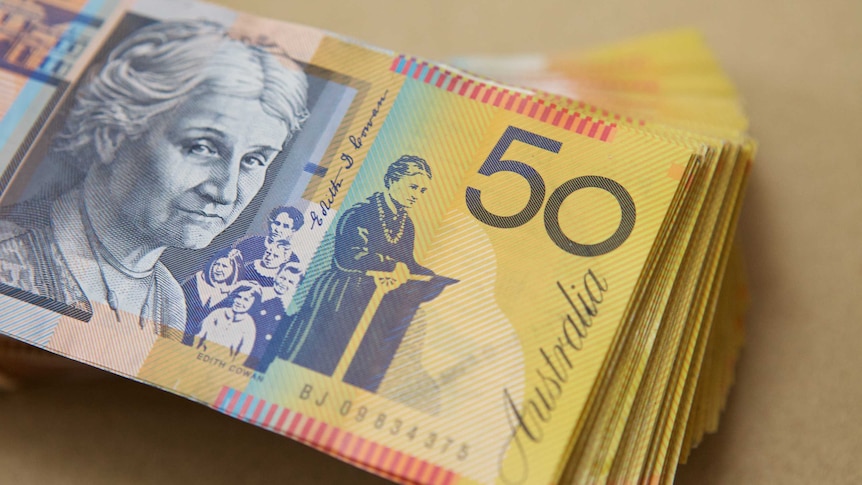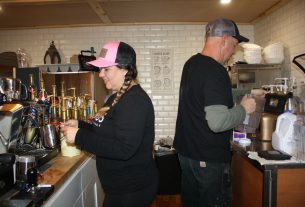[ad_1]
While workers’ pay packets are growing at the fastest pace in a decade, profits are still rising even faster, according to official data.
Key points:
- Profits grew 10.6 per cent in the December quarter, versus a 2.6 per cent rise in total wages and salaries
- Wage and salary increases slowed down later in 2022
- The ACTU has accused corporate Australia of a “greed-price spiral” causing inflation
The Bureau of Statistics releases data on the size of corporate profits and workers’ compensation each quarter.
Its latest figures, for the December quarter, show company gross operating profits rose 10.6 per cent, seasonally adjusted, over the final three months of last year.
Investment firm JP Morgan described it as a “significantly stronger” number than it was expecting.
The annual increase in profits was 16 per cent.
Not just mining and energy firms boosting profits
This latest ABS data also points to profits being generated across a wide swathe of the economy, not just the resources sector.
“There’s no doubt the energy industry has been the source of the biggest inflationary profits in the whole economy,” the Australia Institute’s Jim Stanford said.
He authored a recent report that argued 69 per cent of inflation over and above the Reserve Bank’s target range of 2 to 3 per cent related to corporate profiteering.
He said the resources sector is the single biggest “culprit” of this inflation.
“But we’ve seen the same thing happen to a less dramatic degree in other sectors, like the banks, the supermarket chains, building products and property developers,” Dr Stanford added.
However, while profits were up, the ABS data also suggests business activity may be starting to slow.
The bureau measures the volume of inventory, or stock, businesses are holding.
It is a pointer to potential demand in the economy as businesses store stock they believe they will sell.
“Inventories fell 0.2 per cent, seasonally adjusted,” the ABS reported.
This suggests bosses believe shoppers will pull back further in the months ahead, which is consistent with forecasts from both the Reserve Bank and Treasury.
Wages growth lags profits, and is falling
Meanwhile, the ABS figure on wages and salaries — a much broader number than its Wage Price Index, published last week — was up 2.6 per cent in the quarter and 11.6 per cent over the year.
Commonwealth Bank economist Belinda Allen said, if anything, the wages data showed pay growth was starting to decelerate.
“The pace of increase stepped down again in the quarter from a lift of 3 per cent in Q3 [the third quarter] ’22 and 3.4 per cent in Q2 ’22,” she observed.
“This measure of wages and salaries picks up head count, compositional changes as well as wage rises.”
In other words, this is not simply pay rises for the same worker doing the same job, like the WPI, but is skewed higher by more people being employed, picking up extra hours or getting promotions.
ANZ Bank’s economics team described the business data from the bureau today as a mixed bag.
“December quarter business indicators were mixed, with strong company profits, moderate wages growth, and weak inventories and sales volumes,” ANZ Bank noted.
AMP agreed with that.
“Quite mixed business indicators,” AMP economist Diana Mousina said.
“Very strong profit growth, reflecting the inflation environment, decent wages and salaries, but inventories were down and very poor production volumes.”
The lower business production volumes data point is consistent with other ABS figures showing real retail turnover was lower in December.
In other words, shoppers are buying less “stuff”, but paying more for those items.
‘Greed-price spiral’
Economists say the evidence now points to a slowing in the economy as businesses produce less, and workers struggle to pay more for a given basket of goods.
In the meantime, though, some businesses are generating record profits as they stretch their margins.
The problem for households is that wages growth remains relatively weak, while the Reserve Bank presses on with higher interest rates to bring soaring inflation (7.8 per cent) down to its target band of between 2 and 3 per cent.
“Their rate increases are likely to cause a significant slowdown in the economy, quite possibly a recession, later this year,” Jim Stanford says.
“That would be a cure that’s worse than the disease.
“And then you’d have hundreds of thousands of workers lose their jobs on top of the problem of inflation that we already face.”
ACTU secretary Sally McManus said companies should drop their prices and moderate their profit expectations in order to get inflation under control.
“What we’re seeing is a greed-price spiral as corporate profits surge while wages stagnate. It is these profits off the back of excessive price rises that are pushing up inflation, not wages,” she argued.
“Companies in key sectors such as energy, retail, banking and insurance know people have no choice but to pay the prices they set. Corporate Australia is driving inflation, not working people and their sluggish wages.”
[ad_2]
Source link



